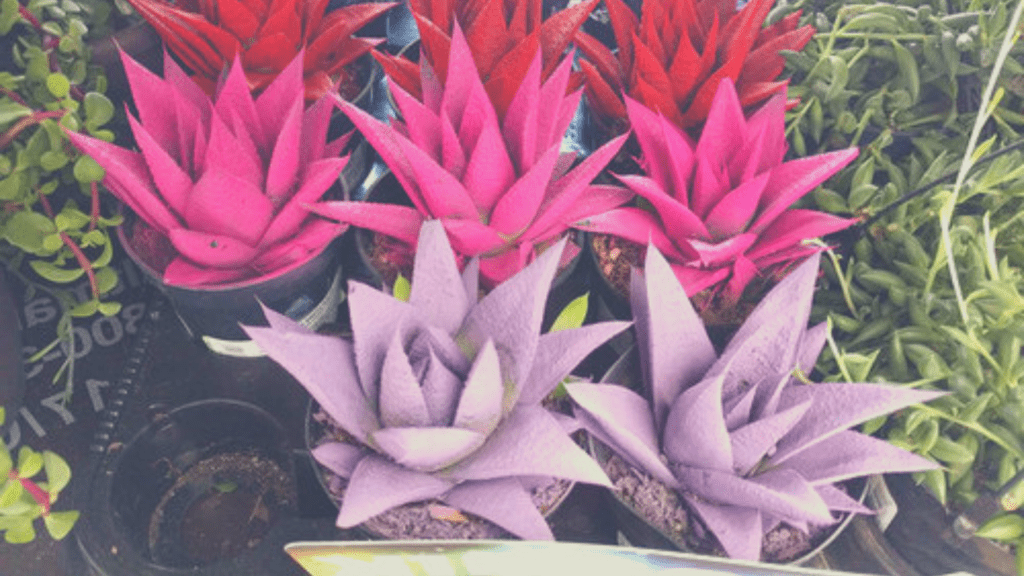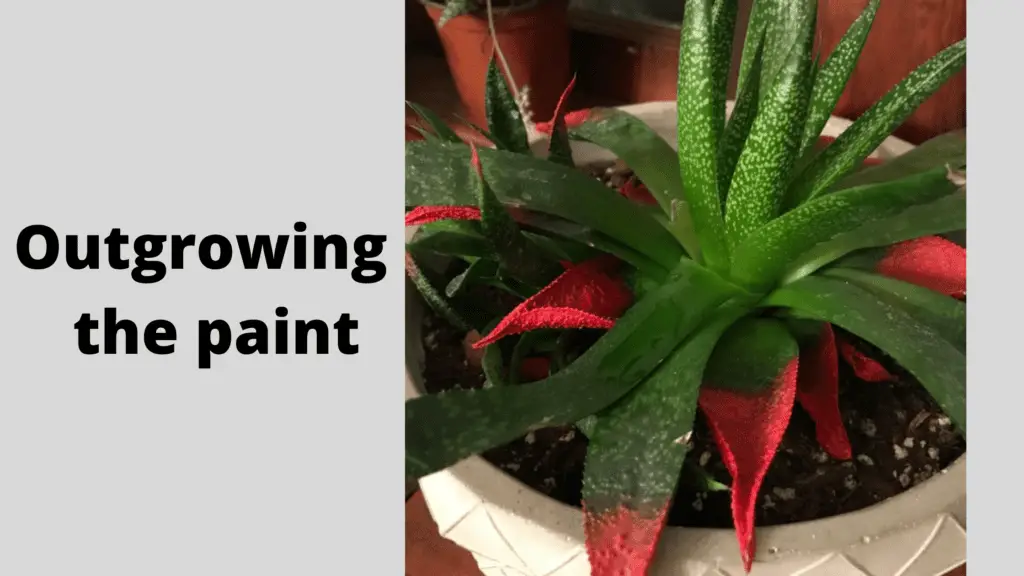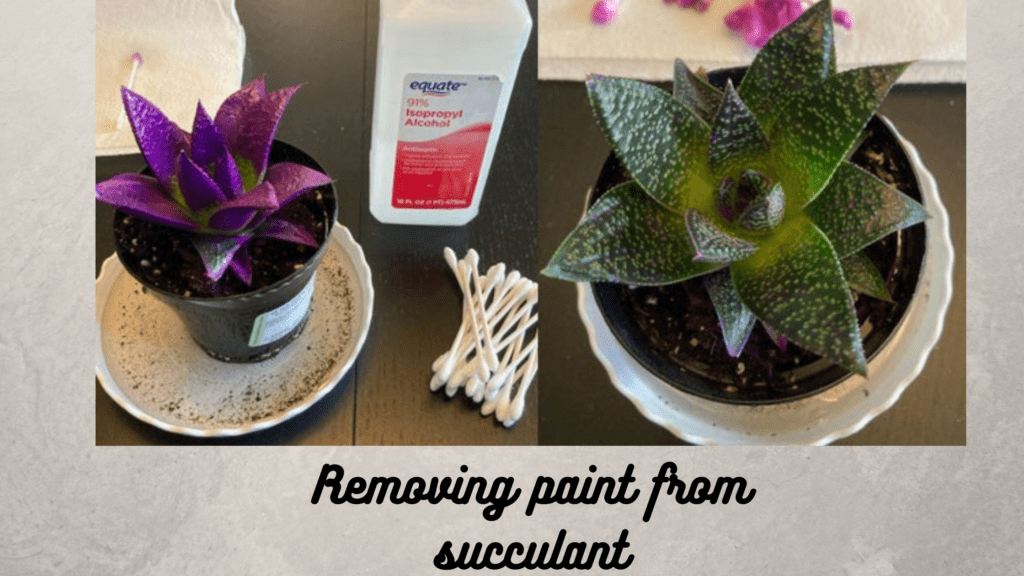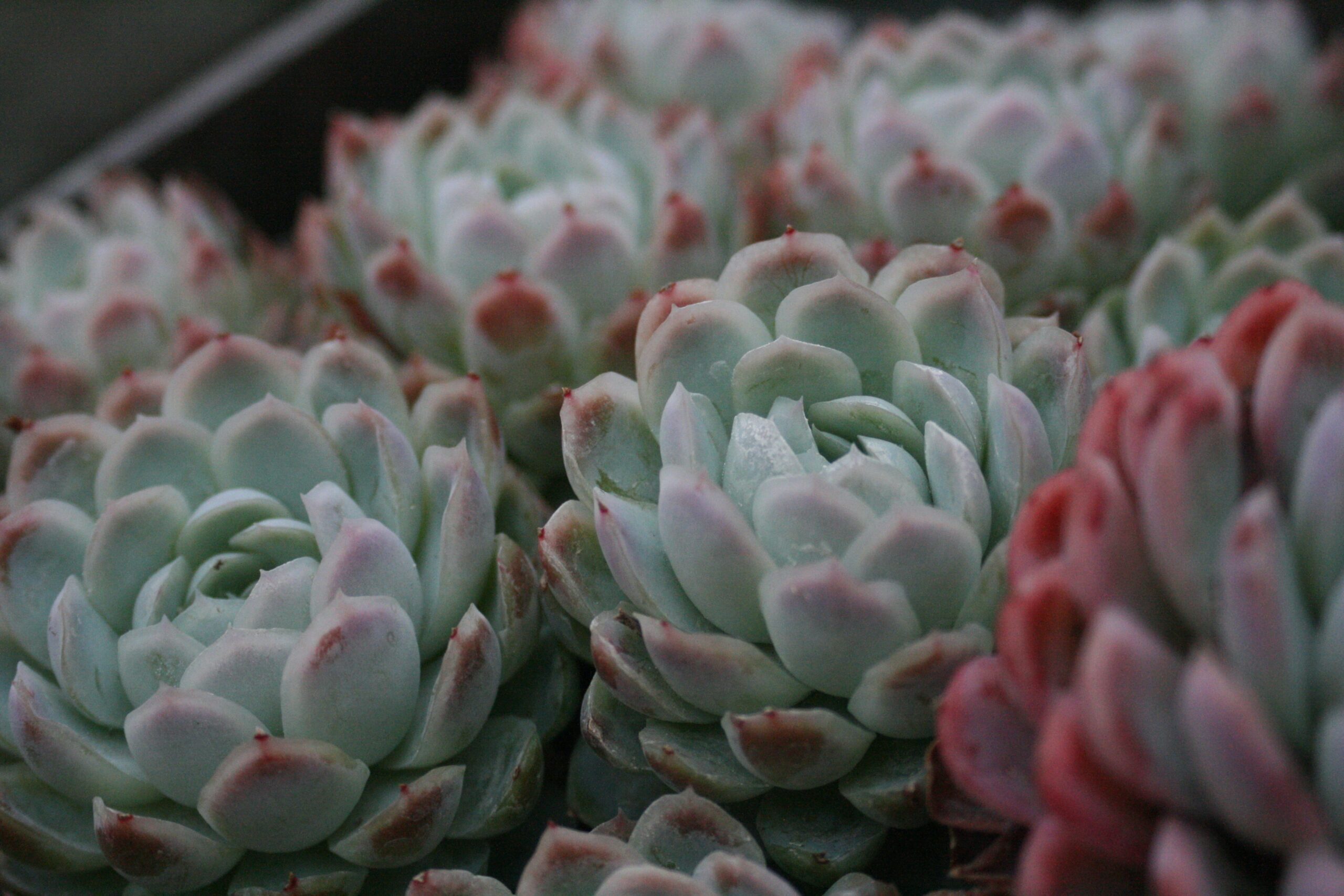Removing paint off plants is typically the last thing any plants owner wants to do when it comes to plants care.
Painted succulents are a new stylish home plant available at retailers such as Walmart. Is it, however, safe to spray paint succulents? What happens to those adorable, brightly colored plants over time?
Plants and flowers that are not naturally colored are not new, but they are contentious in the horticulture community. Whether you like or dislike painted succulents, they do make for a fun rainy-day craft.
If you are wondering how you can remove the paint from your succulents, here is the answer.
How To Remove Paint From Succulents
Depending on the type of paint used, you can remove it from succulents. To safely remove the paint, use a solvent that will remove the paint without harming the plant. In such circumstances, experts recommend solvents such as water and rubbing alcohol.
Dyed Houseplants: SUCCULENTS

Succulents with unusual colors are nothing new. We are sure you’ve seen those bright blue orchids in the grocery store. These hues are not found in nature and are dyed.
Poinsettia in every color of the rainbow and coated with glitter is seen throughout the Christmas season. Some people consider artificially colored plants and painted succulents to be sacrilegious. We do not, obviously.
You can say that they’re plants. They don’t have feelings. Therefore, having fun and experimenting with art is OK. But still, we should do this with as much care as possible.
A typical experiment in primary school courses is to divide the stem of a flower along the middle, then dip the individual pieces of the stem into various jars of water colored with food coloring.
The colored water goes up the stem and into the flower, coloring the petals a rainbow of colors.
Is Painting Succulents Bad For The Plants?
The dye used to color these plants is believed to be food-safe and non-toxic by the firm that painted them.
Close investigation reveals that the plants have been sprayed or dipped in this paint. The color is solely on the plant’s surface. It will most likely fade with time, and as the plant develops, new growth will not have these strange tints.
Succulents are drought-tolerant plants with water storage in their stems and leaves. Plants utilize their leaves and stems to absorb sunlight and produce food (photosynthesize) (transpire).
Coating the leaves completely with paint prevents this and will most likely kill or severely harm the plants.

Most spray-painted succulents live for a few months on their reserves before dying.
Some do manage to create new, healthy growth and “outgrow” the paint; if this happens, you’ll need to cut off the top and root it, in which case it will appear like a normal succulent (unless you want to paint it again).
Succulents grow slowly. These painted succulents will retain their color for months, if not years, assuming they live that long. Succulents use photosynthesis in a somewhat different way than other plants, but they still require it.
It is conceivable that this dye has no impact; nevertheless, it is more likely that most individuals who dye succulents do it for the novelty value and then leave them on the windowsill to be forgotten and eventually die.
Removing Paint from Succulents
When it comes to dissolving things, chemistry education teaches us that like dissolves like.
In other words, water dissolves water-based chemicals while inorganic solvents dissolve inorganic compounds.
Succulents, like us, are living entities, and artificial treatments can harm them. As a result, applying solvents on plants has the same impact as using the same solvent on your hands.
Removing Water Based Paint
Removing water-based paint from a succulent is as simple as soaking a towel in water and cleaning the leaves until all of the paint has got removed.
- Soak a clean towel or rag in clean water for a few minutes.
- By wringing the fabric, you may get rid of the extra water.
- Using a single directed stroke, gently remove the paint from the surface of the leaf.
- Repeat until all of the paint has got removed from the leaves.
The only disadvantage is when the plant has a lot of leaves.
You may use a microfiber cloth to clean various plants after our house gets painted; they are both inexpensive and effective.
Removing Oil Based Paint
Organic solvents are required to remove oil-based paints com from the leaves. Rubbing alcohol is the least corrosive organic solvent you may use. It just breaks apart the paint bonds, freeing the paint from whatever you make its bonds with.
The paint then may be wiped away with a single one-way swipe.

The removal procedure is identical to that of water-based paint.
- Using rubbing alcohol, soak a clean towel or rag.
- Wring the cloth to remove any surplus alcohol.
- Using a single directed stroke, gently remove the paint from the surface of the leaf.
- Repeat until all of the paint has got removed from the leaves.
Plants with glossy leaves have an advantage in this scenario since oil-based paints do not generally attach to oily or smooth surfaces, and wiping oil-based paint off the leaves is quite straightforward with such plants.
Removing Latex Paint
Latex paint is a water-based paint that has acrylic compounds added to it to give it a rubber or plastic feel.
This is advantageous when it comes to removal since the paint that gets captured in the early stages may be washed off or simply waited until it dries so that it gets peeled off easily.
Rather than waiting for the paint to dry and then meticulously peeling it off every single leaf, you should address the issue as soon as the paint touches the plant.
Never use your fingernails or other rough scrapers to remove paint off plant leaves in any paint case.
The harsh surface of your nails or scraper might harm the surface of the leaf when attempting to remove paint by blocking the pores of the leaf.
Final Verdict
It is recommended not to paint the plants because it can damage them to a great extent.
However, if you want to paint them for a certain event like Christmas, make sure to remove them when the event is over so that they won’t get hurt, and clean them properly according to the type of paint you have used on them.
Beatrix Ainsley (Bea to her friends) is an abstract artist who was heavily inspired in her twenties by the abstract expressionist movement of the 1940s. Since then Bea has acquired three degrees in Science, Education and most importantly Fine Art. Her art works showcase exploring emotion and introspection of self. To achieve this – the use of bold, sweeping, intricate layers of color, and spontaneity of form is enhanced by reflecting on decades of life experiences. Bea has amassed a vast knowledge of art in all its forms, and hopes to pass it on with her contributions here.

